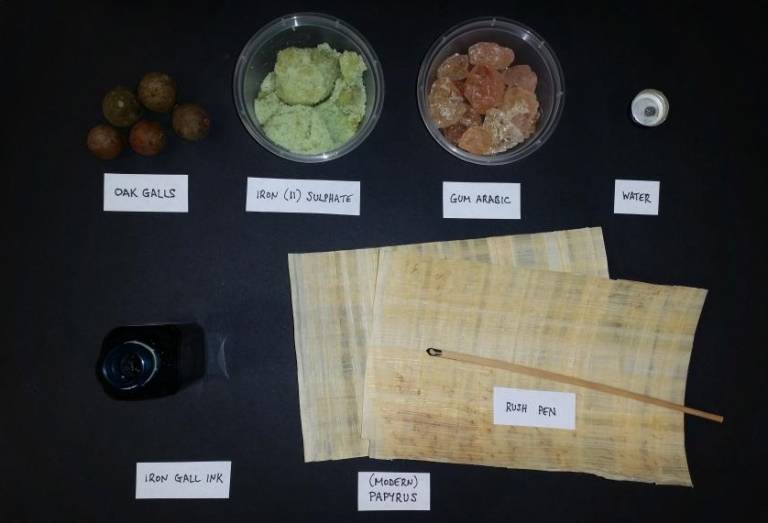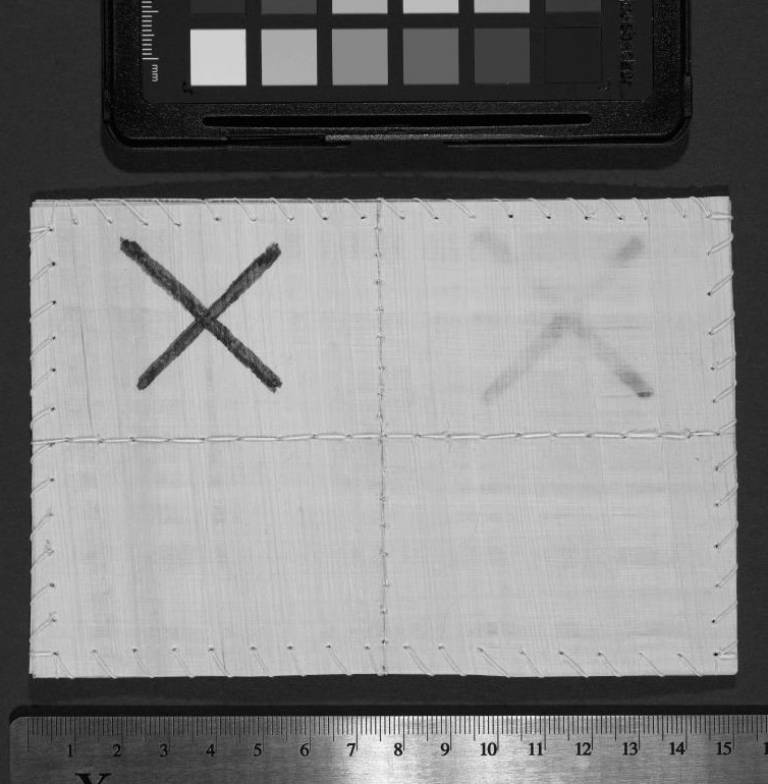Our approach - capture some real stuff, and some controlled stuff.
Phantoms
The use of test phantoms has a long history in medical physics, where tissue-equivalent materials are used to test new imaging methods and characterise their performance in the laboratory before they are applied to human volunteers. We have used a similar approach in a previous study in digital humanities where we used deaccessioned parchment samples as test objects by imaging them before and after damage. That allowed us to better understand the damage and the effect of image processing algorithms which we used to process the images.
In this project, we wished to determine whether advancedimaging methods are able to detect and read text within a mummy cartonnage.This is a broad, complex question to which the answer is almost certainly "it depends". A phantom or surrogate material allows us to break the question downand isolate specific components. For example, we could design a phantom to help us understand "under how many layers of papyrus can we detect ink?", or "through what thickness of plaster can we detect ink"? It would be very hard to answer these questions on genuine historical objects, but by creating a modern surrogate, we posed much more simple, controlled questions which assistedus in interpreting the images we get from real cartonnage.

Making the phantom, showing the ingredients for the iron gall ink, modern papyrus and a rush pen
Furthermore, by creating a test phantom with known properties, we could compare the effects of different imaging modalities much more objectively than with historical artefacts, whose composition is likely to be less well characterised and, of course, we conducted a wide range of tests on different instruments at different sites without worrying about damaging primary historical objects.
A scientific paper on this work has been accepted for publication pending revisions, and we will make it available once published.

Image of the phantom with crosses in each quadrant under successively more sheets of papyrus.
 Close
Close

